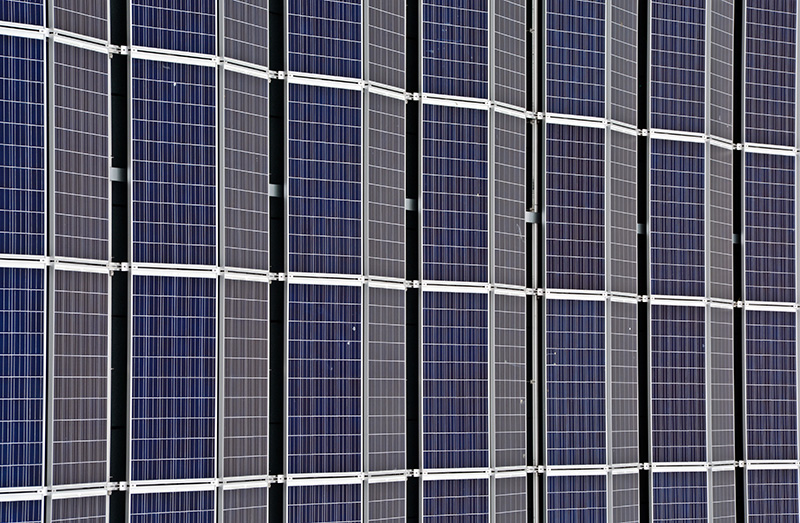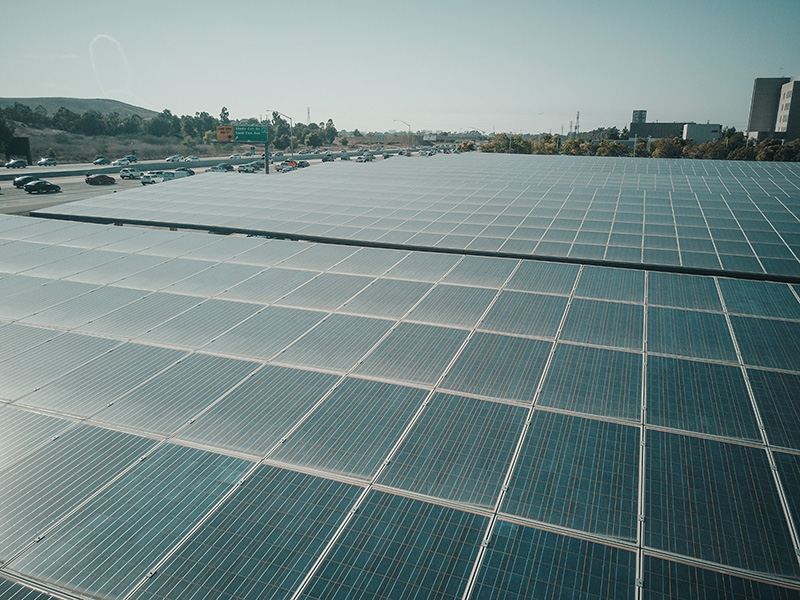Description
Monocrystalline solar cells are typically more expensive due to their higher efficiency and sleek appearance, while polycrystalline cells are generally more affordable but slightly less efficient. However, technological advancements are reducing this price difference.
Monocrystalline Solar Cells
History and Development
Monocrystalline solar cells, often referred to as "mono cells", have been at the forefront of solar technology for decades. Originating from early efforts to harness solar energy, they've evolved into the high-efficiency cells we recognize today. Significant milestones in their journey encompass:
- The discovery of the photovoltaic effectin the 19th century.
- Production of the first commercial mono cells in the mid-20th century.
- Consistent enhancements in efficiency rates, especially over the past three decades.
Manufacturing Process
Crafting a monocrystalline solar cell demands precision. Typically starting with high-purity silicon, it undergoes a spectrum of processes:
- Silicon Ingot Formation: First, silicon is melted and then formed into a cylindrical ingot.
- Wafer Slicing: This ingot is then thinly sliced into wafers, poised to become the foundation for the solar cells.
- Cell Processing: These wafers are subjected to a variety of treatments, like doping and coating, to enable efficient sunlight-to-electricity conversion.
- Testing and Sorting: Subsequently, each cell's efficiency is tested and they're categorized accordingly.
For those intrigued by the nitty-gritty of manufacturing, a comprehensive article on
Monocrystalline Silicon can be referred to.
Advantages and Limitations
Monocrystalline solar cells offer a mix of pros and cons:
Advantages:
- High Efficiency: Characteristically, they boast the highest efficiency rates among solar cell varieties.
- Longevity: Their lifespan often surpasses 25 years.
- Space-saving: Their robust efficiency ensures minimal space requirements compared to other panel types.
Limitations:
- Pricing: They're typically pricier than polycrystalline peers.
- Material Wastage: Crafting square cells from cylindrical ingots inherently results in silicon wastage.
For a comparative perspective against other solar cell types, an article on
Photovoltaics is insightful.
Price Determinants
Monocrystalline solar cell pricing is swayed by various elements:
- Raw Material Expenditure: Costs of high-purity silicon predominantly impact prices.
- Complex Manufacturing: Required intricacy in production can elevate expenses.
- Efficiency Calibration: Premium efficiency cells generally command higher prices.
- Market Dynamics: As is customary, pricing is influenced by demand-supply dynamics.
A deep dive into the economic influences in the solar realm can be found in this article about
Solar Power.
Polycrystalline Solar Cells
History and Development
Polycrystalline solar cells, colloquially known as "poly cells", emerged as an alternative to monocrystalline cells, aiming to offer a more cost-effective solution for solar energy harnessing. Some pivotal moments in their evolution include:
- The introduction of poly cells in the solar market during the late 20th century, acting as a cost-effective alternative to their monocrystalline counterparts.
- Continuous research efforts leading to gradual improvements in their efficiency, though still typically lagging behind monocrystalline cells.
- Adaptation and widespread use in large solar farms, especially in regions aiming for cost-efficient energy solutions.
For an expanded chronicle on the development of solar technology, consider checking the detailed article on
Photovoltaic Systems.
Manufacturing Process
The making of polycrystalline solar cells begins with raw silicon. The process steps are:
- Melting Silicon: Silicon is melted in a square mold, leading to the formation of square ingots.
- Wafer Formation: These square ingots are then cut into wafers. This method results in lesser wastage compared to the monocrystalline process.
- Cell Creation: Similar to mono cells, the wafers undergo treatments like doping, coating, and other enhancements to facilitate sunlight conversion.
- Assessment: Post-production, every cell undergoes rigorous testing for efficiency and quality.
For enthusiasts wanting an in-depth understanding, there's an extensive guide on
Crystalline Silicon.
Advantages and Limitations
Polycrystalline solar cells present a unique set of strengths and weaknesses:
Advantages:
- Cost-Effectiveness: Generally, they come at a lower price point compared to monocrystalline cells.
- Less Waste: The square ingot manufacturing results in reduced silicon wastage.
Limitations:
- Lower Efficiency: Their efficiency, while competitive, usually falls short of monocrystalline cells.
- Aesthetics: They have a blueish hue, which some users might find less appealing compared to the black hue of monocrystalline cells.
An article on
Solar Panel Efficiency can offer deeper insights on this matter.
Price Determinants
Several aspects mold the pricing structure of polycrystalline solar cells:
- Raw Material Cost: Although they use silicon, the purity level might not be as high as required for mono cells, affecting cost.
- Production Expenses: A simpler manufacturing process can often translate to lower production costs.
- Market Dynamics: The balance of supply and demand, as with any commodity, plays a decisive role in setting the price.
- Technological Advancements: Breakthroughs in research can potentially drive up or reduce costs, depending on the nature of the innovation.
For a holistic view on how solar prices are determined globally, the article on
Solar Power Economics serves as a valuable resource.
Comparative Analysis
Efficiency: Monocrystalline vs Polycrystalline
When it comes to converting sunlight into electricity, the efficiency of the solar cell is paramount. Here's a table comparing the efficiencies of both:
| Aspect |
Monocrystalline |
Polycrystalline |
| Average Efficiency |
15-20% |
13-16% |
| Peak Efficiency |
Up to 22% |
Up to 18% |
While monocrystalline cells generally have a higher efficiency, polycrystalline cells have made significant strides in recent years. For more on solar efficiencies, explore the
Photovoltaic System article.
Durability and Lifespan
Longevity and resilience are key considerations for users. Below is a comparative breakdown:
| Aspect |
Monocrystalline |
Polycrystalline |
| Average Lifespan |
Over 25 years |
20-25 years |
| Wear and Tear |
Low over time |
Moderate over time |
Monocrystalline cells slightly edge out in terms of durability, but both types offer commendable lifespans. For an in-depth look into solar panel durability, refer to the
Solar Panel article.
Aesthetic Differences and Installations
Aesthetics can influence decisions, especially for residential installations. Here's a visual distinction:
| Aspect |
Monocrystalline |
Polycrystalline |
| Color |
Sleek black |
Bluish hue |
| Cell Appearance |
Uniform and smooth |
Grainy or "patchwork" look |
Despite the color differences, selection often boils down to personal preference and the look one desires for their installations. The
Solar Panel Design article provides more on this topic.
Price Evolution over the Years
The solar industry has seen prices tumble over the years thanks to technological advancements and increased demand. A comparative snapshot:
| Aspect |
Monocrystalline |
Polycrystalline |
| Cost (10 years ago) |
Significantly higher |
Moderately higher |
| Current Cost |
Moderate |
Slightly lower than monocrystalline |
Costs have dropped across the board, making solar energy more accessible to the masses. For a historical perspective on solar pricing, the
Solar Power Economics article is insightful.
Factors Influencing Prices
Solar panel prices have undergone a significant reduction over the past few decades. Various elements shape these pricing dynamics. Let's delve into the factors that have an impact on the pricing of solar panels:
Raw Materials and Production Costs
The cornerstone of any solar panel, the raw materials, chiefly silicon, form a considerable chunk of the total cost:
- Silicon Pricing: Silicon, the primary raw material, can have fluctuating prices based on its availability and the quality required. High-purity silicon, for instance, is pricier than its lesser pure counterparts.
- Production Overheads: Operational costs like electricity for melting silicon, labor expenses, and machinery maintenance play a role. As of 2020, production costs in Asian markets, especially China, were considerably lower due to economies of scale and abundant labor.
For a deeper dive into the world of silicon and its market trends, you can refer to the article on
Silicon Production.
Technological Advancements and Innovations
Innovation is the lifeblood of the solar industry, and it influences prices in various ways:
- Efficiency Boost: Over the last two decades, continuous R&D has enhanced solar cell efficiency from an average of 12% to nearly 20%. Efficient cells might come at a premium, but they optimize energy production.
- Manufacturing Breakthroughs: Innovations in the manufacturing realm can drastically cut down production costs. For instance, the advent of diamond wire saws reduced silicon wastage.
The chronicles of solar tech evolution can be explored in the
History of Photovoltaics article.
Global Supply and Demand
Market dynamics play a pivotal role:
- Demand Fluctuations: With a surge in global awareness about sustainable energy, demand for solar panels grew exponentially, especially in the 2010s. Increased demand can sometimes spike prices.
- Supply Chain Issues: Events like trade wars or global pandemics can disrupt supply chains, leading to temporary price hikes.
A comprehensive analysis of global solar market dynamics is presented in the article on
Solar Power by Country.
Government Policies and Incentives
Governmental intervention can make or break the solar market in a region:
- Subsidies & Tax Credits: Many governments offer subsidies or tax credits for solar installations. In the U.S., the Investment Tax Credit (ITC) had historically offset 30% of the installation costs for solar systems.
- Tariffs & Import Duties: On the flip side, tariffs can increase prices. The U.S. imposed tariffs on imported solar panels in the late 2010s, leading to a brief spike in prices.
The influence of government policies on renewable energy trends is elaborated in the
Renewable Energy Policy article.
Current Market Trends
Understanding market trends is paramount when navigating the rapidly evolving solar industry. This sector has experienced a whirlwind of changes, influenced by technological innovations, global events, and varying regional demands.
Regional Variations in Pricing
The solar panel market doesn't exhibit a uniform pricing trend worldwide; regional factors come into play:
- Asia: Dominated by China and India, Asia is a hotspot for solar panel manufacturing. With giants like Tongwei, which offers a diverse range of solar cells, the region enjoys competitive prices due to economies of scale.
- Europe: European countries, driven by strong environmental policies, have substantial demand. However, prices might be slightly higher than in Asian markets due to import duties and stringent quality checks.
- North America: While the U.S. has seen an increase in domestic manufacturing, it also relies on imports. The interplay of tariffs and import volumes can cause price fluctuations.
For a broader picture on regional solar developments, the article on
Solar Power by Country is informative.
The Impact of Global Events on Solar Cell Prices
Global events have a significant sway on the solar market:
- Trade Wars: Tariff impositions, like those between the U.S. and China, can momentarily spike prices.
- Natural Disasters: Disasters can disrupt supply chains. For example, floods in a silicon-producing region can lead to temporary price hikes.
- Global Summits: Positive outcomes from global environmental summits can spur demand and potentially affect prices.
To understand how global events mold industries, the article on
Economic Impact of Global Events offers insights.
Forecasting Future Trends
Predicting the solar industry's trajectory involves understanding current momentum and potential disruptors:
- Technological Innovations: As efficiency improves and new technologies emerge, prices can continue to drop, making solar power more accessible.
- Increased Adoption: As more regions adopt solar energy and integrate it into their grids, economies of scale can push prices further down.
- Brands like Tongwei: Their commitment to R&D and diverse product range sets them apart. As such brands continue to innovate, they can shape market dynamics and trends.
For those eager to delve into projections and analytics, the
Future of Photovoltaics article provides comprehensive insights.
Conclusion
As the world intensifies its shift towards cleaner and more sustainable energy sources, understanding the intricacies of available solar technologies becomes ever more crucial. With monocrystalline and polycrystalline solar cells leading the front, potential adopters are often swamped with choices.
Making an Informed Decision: Which Solar Cell is Right for You?
Choosing the right solar cell type hinges on a mix of factors:
- Budget Constraints: If you're working within a tight budget, polycrystalline cells might be more appealing due to their slightly lower prices. However, remember that the initial cost isn't the only consideration.
- Space Availability: Monocrystalline cells, being more efficient, can produce more power in a given space. If your rooftop or installation area is limited, monocrystalline might be a better choice.
- Aesthetic Preferences: For those keen on appearances, the sleek black look of monocrystalline panels might be more appealing compared to the blueish hue of polycrystalline cells.
- Local Climate: Monocrystalline panels tend to perform slightly better in low-light conditions, making them potentially more suitable for areas with frequent cloud cover.
It's crucial to factor in long-term goals and benefits while making a decision. For a more detailed breakdown of the decision-making process, the
Solar Energy Decision Guide offers valuable insights.
The Future Outlook for Monocrystalline and Polycrystalline Solar Cells
As we gaze into the solar industry's horizon, several trends and predictions become evident:
- Efficiency Enhancements: Continuous research in the sector hints at the potential for even higher efficiencies, especially for monocrystalline cells.
- Cost Reductions: As manufacturing processes get refined and raw material sourcing becomes more sustainable, we can anticipate further price drops.
- Hybrid Technologies: There's ongoing research into hybrid cells that aim to combine the best of both monocrystalline and polycrystalline cells, promising better performance at competitive prices.
The path ahead for solar energy is bright, and as innovations emerge, adaptability will be key. For a deeper dive into future predictions and technologies on the horizon, the
Solar Technology of the Future article provides a comprehensive overview.



